 The birth and especially the resurrection of Christ are the most important festive days for Christianity. They form the beginning and the end of the winter cycle during the ecclesiastical year. Many medieval liturgical books revolve around the celebration of saintly feasts throughout the year. Here we encounter a beautiful Swiss-German Breviary from the 15th century with a great number of decorated initials and a glorious page that tells the story of Christ's nativity in an entertaining and endearing way.
The birth and especially the resurrection of Christ are the most important festive days for Christianity. They form the beginning and the end of the winter cycle during the ecclesiastical year. Many medieval liturgical books revolve around the celebration of saintly feasts throughout the year. Here we encounter a beautiful Swiss-German Breviary from the 15th century with a great number of decorated initials and a glorious page that tells the story of Christ's nativity in an entertaining and endearing way.
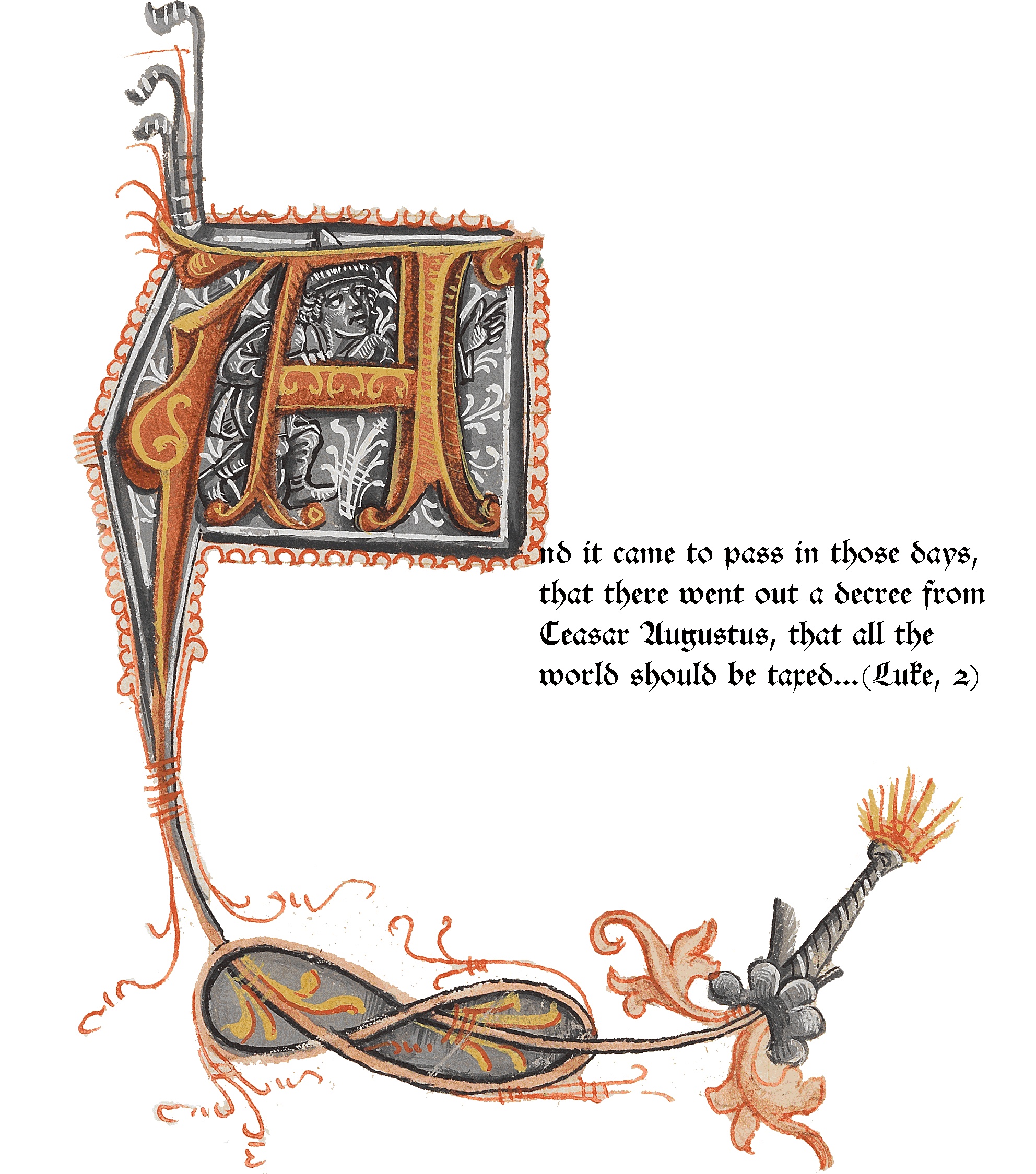
Thus, the crucial story of Christendom begins with a rather mundane situation: a tax increase – not so uncommon even nowadays.
The Gospel of Luke (2:3-7) tells the story as follows:
"And all went to be taxed, every one into his own city. And Joseph also went up from Galilee, out of the city of Nazareth, into Judaea, unto the city of David, which is called Bethlehem; (because he was of the house and lineage of David:) To be taxed with Mary his espoused wife, being great with child. And so it was, that, while they were there, the days were accomplished that she should be delivered. And she brought forth her firstborn son, and wrapped him in swaddling clothes, and laid him in a manger; because there was no room for them in the inn."
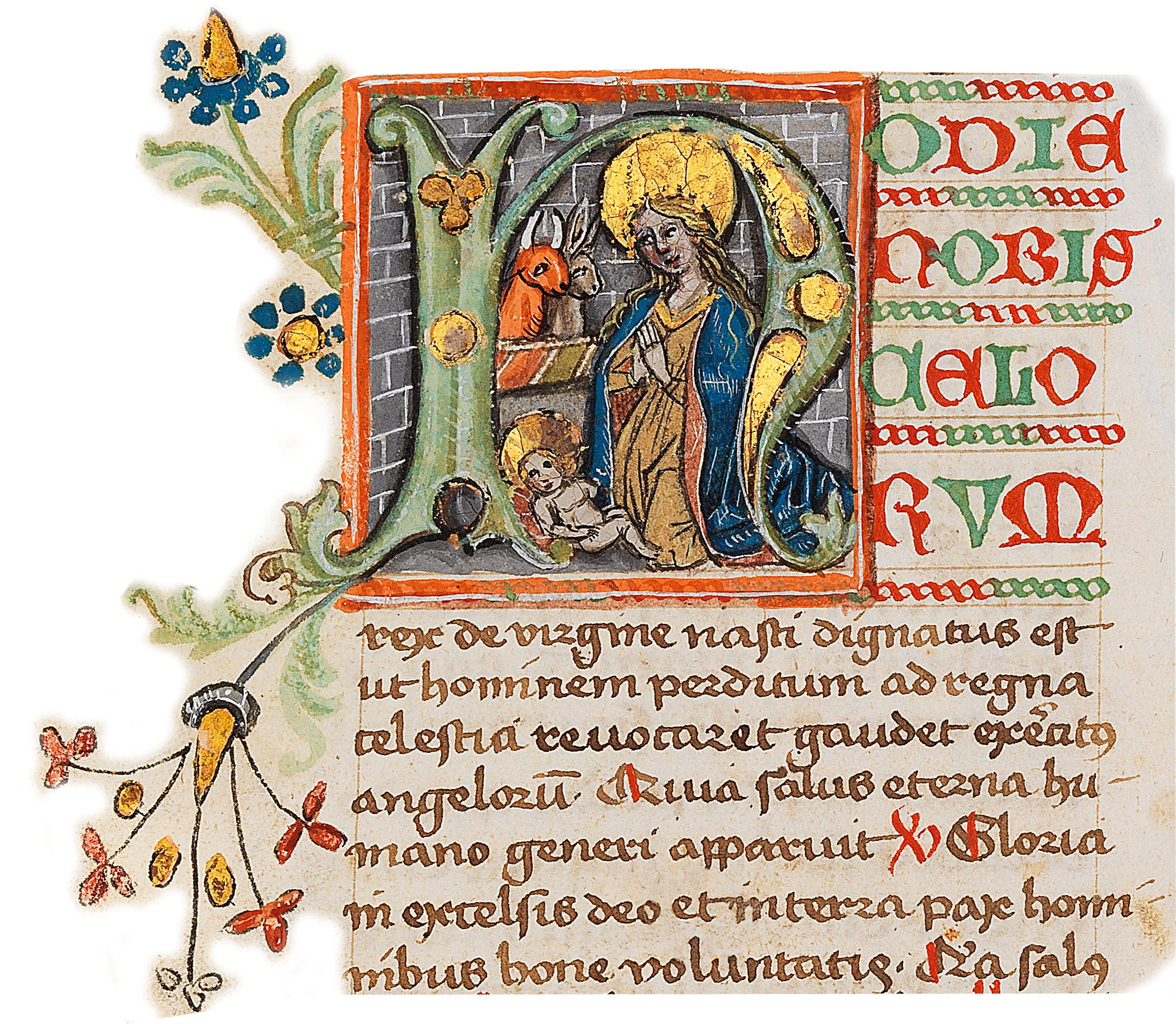
This Initial H introduces the text for the feast of nativity "Hodie nobis celorum rex de virgine nasti dignatus est..." (On this day the King of heaven was born to us worthy of being born from the Virgin).
The incipit is handsomely written in green and red ink, with braided line fillers in the same colours. In the large ornate letter H, the nativity scene is placed: Mary kneels and worships her child, while ox and donkey are literally watching with pricked ears. Grey brick stones in the background insinuate the humble barn where the homeless family had to stay. The child is not even placed in the manger, as the Bible says, but on the naked ground.
Back to the introductory image with the shepherds in the field: this scene is placed in the lower margin of the page. It seems likely that one of the herdsmen points up to the initial with the Nativity in order to direct the beholders attention to the most important part of the narration.

Not entirely true! For there is something else that attracts the man's attention: a fabulous creature is standing on top of the rock.

The Unicorn, at which our excited shepherd is pointing here, has a very special meaning in Christian symbolism. It said to be invincible, indomitable and can only be tamed by a virgin. The unicorn's horn has magical and healing power and is apt to purify poisoned waters. Therefore, it was often understood as an allegory of Christ. The legendary animal was frequently shown in companionship with a young lady (a virgin) or with the Virgin Mary in late medieval art.
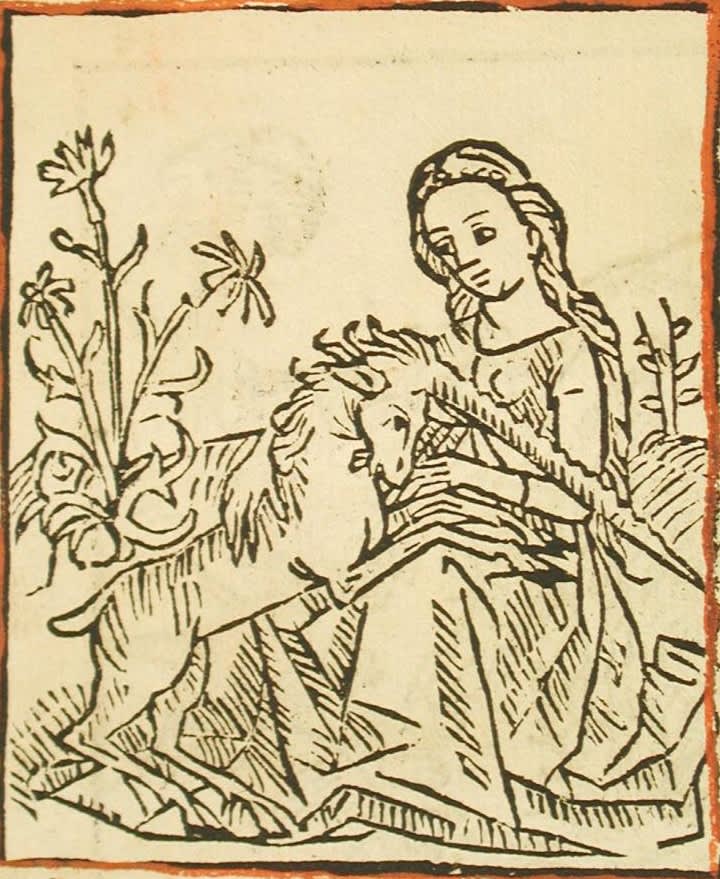
Salzburg, Universitätsbibliothek
A set of seven tapestries in the New York Metropolitan Museum (The Cloisters) shows a sequence of the hunt, the overcoming by a treacherous ruse – involving a maiden – and finally the death of the unicorn.
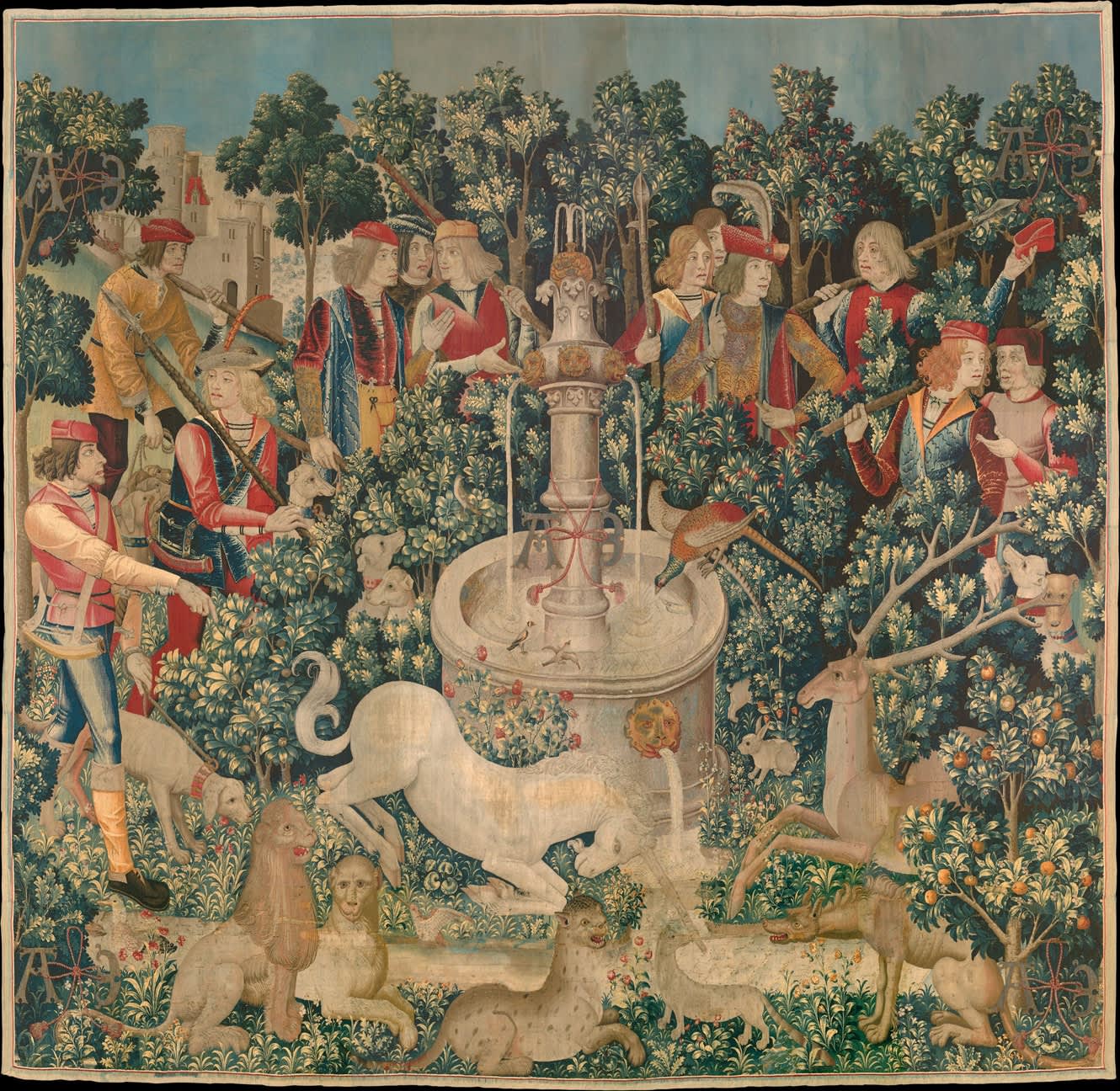
New York, Metropolitan Museum, The Cloisters: The Unicorn is found
Miraculously, in the last tapestry the animal is alive again: betrayed like Christ, resurrected like Christ, and now, sadly, in captivity.
The wonderous animal on top of that steep rock, hence, is the symbol for the triumphant advent of the saviour.
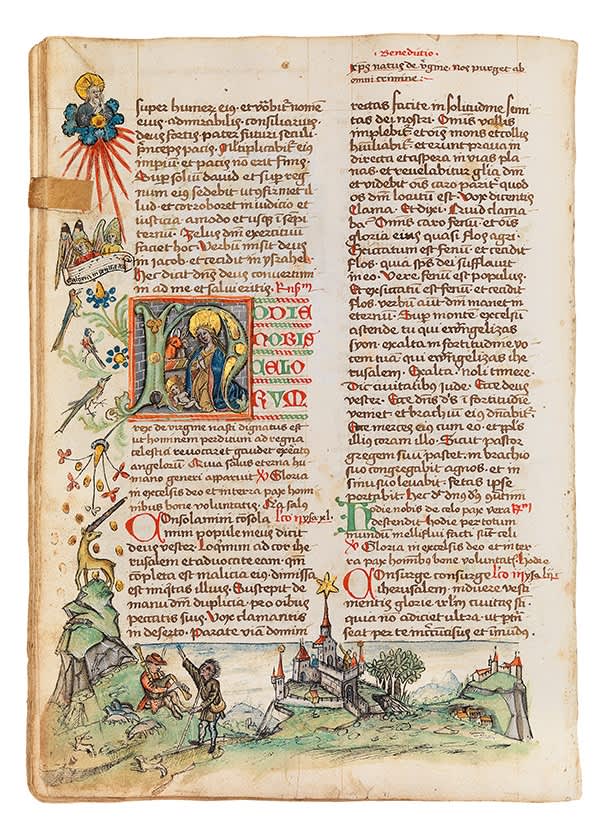
Looking now at the whole composition of the leaf, we realize the story-telling talent of the illuminator and how he subtly guides the beholder's gaze upward to God the Father who presides over the entire scene. In the bas-de-page, i.e. the earthly sphere, it dawns on mankind that something extraordinary is about to happen. In the center of the pictorial field, there is a medieval town. The city Nazareth may be portrayed here, although it rather recalls southern German architecture. A huge, bright star has settled on top of the church tower and people also point upwards. This leads the eye to the Nativity in the stable. From there, flowers and tendrils grow and send a sprinkle of golden petals down on the magic unicorn. In the tendrils, four birds rejoice in the Saviour's birth and join in with the two angels, who sing the Gloria in excelsis deo. In the top left corner, God the Father, the Alpha and the Omega of the world, blesses all activity.
We wish you all a merry and blessed Christmas and a very happy New Year with many lucky unicorns!



